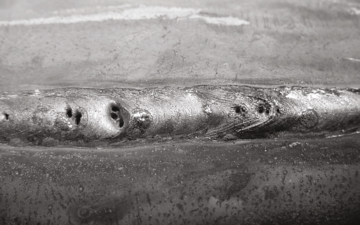What is Porosity in Welding: Common Resources and Reliable Solutions
What is Porosity in Welding: Common Resources and Reliable Solutions
Blog Article
Understanding Porosity in Welding: Exploring Causes, Effects, and Avoidance Strategies
As professionals in the welding sector are well mindful, understanding the reasons, impacts, and prevention techniques related to porosity is crucial for achieving durable and reputable welds. By diving right into the origin creates of porosity, examining its damaging effects on weld quality, and checking out effective avoidance methods, welders can enhance their expertise and skills to produce top quality welds continually.
Usual Reasons For Porosity
Contamination, in the type of dust, oil, or rust on the welding surface area, develops gas pockets when warmed, leading to porosity in the weld. Inappropriate protecting takes place when the shielding gas, generally used in procedures like MIG and TIG welding, is incapable to completely protect the liquified weld swimming pool from responding with the surrounding air, resulting in gas entrapment and succeeding porosity. Additionally, insufficient gas protection, frequently due to incorrect circulation prices or nozzle positioning, can leave parts of the weld unguarded, enabling porosity to form.
Results on Weld Quality
The presence of porosity in a weld can substantially compromise the general high quality and stability of the welded joint. Porosity within a weld develops spaces or tooth cavities that deteriorate the structure, making it a lot more susceptible to breaking, rust, and mechanical failure. These gaps work as stress concentrators, decreasing the load-bearing capability of the weld and boosting the likelihood of early failing under used anxiety. In enhancement, porosity can likewise offer as possible websites for hydrogen entrapment, more exacerbating the deterioration of the weld's mechanical buildings.
Moreover, porosity can prevent the performance of non-destructive screening (NDT) techniques, making it challenging to discover various other flaws or gaps within the weld. This can cause significant security issues, specifically in crucial applications where the architectural integrity of the welded components is paramount.

Prevention Techniques Review
Provided the destructive impact of porosity on weld top quality, effective avoidance techniques are important to maintaining the structural integrity of bonded joints. One of the main prevention strategies is complete cleaning of the base materials prior to welding. Pollutants such as oil, grease, corrosion, and moisture can contribute to porosity, so making certain a tidy job surface is necessary. Proper storage space of welding consumables in completely dry conditions is additionally critical to stop dampness absorption, which can cause gas entrapment throughout welding. In addition, selecting the appropriate welding parameters, such as voltage, current, and travel speed, can aid decrease the danger of porosity development. Making sure appropriate securing gas circulation and protection is an additional critical avoidance method, as inadequate gas protection can lead to atmospheric contamination and porosity. Appropriate welder training and certification are crucial for carrying out preventive procedures effectively and constantly. By incorporating these avoidance methods right into welding practices, the occurrence of porosity can be you could try this out substantially lowered, bring about stronger and much more trusted bonded joints.
Value of Correct Shielding
Appropriate shielding in welding plays a vital duty in preventing atmospheric contamination and making certain the stability of bonded joints. Securing gases, such as argon, helium, or a blend of both, are typically utilized to protect the weld swimming pool from responding with elements airborne like oxygen and nitrogen. When these reactive elements enter call with the warm weld pool, they can create porosity, bring about weak welds with minimized mechanical properties.

Inadequate shielding can cause various issues like porosity, spatter, and oxidation, compromising the architectural integrity of the welded joint. Sticking to appropriate securing practices is vital to generate premium welds with very little flaws and make certain the longevity and dependability of the bonded parts.
Monitoring and Control Techniques
Just how can welders effectively keep track of and manage the welding procedure to guarantee optimum results and protect against defects like porosity? One key method is with making use More Bonuses of advanced monitoring modern technologies. These can consist of real-time tracking systems that provide feedback on specifications such as voltage, present, take a trip speed, and gas flow rates. By constantly keeping an eye on these variables, welders can recognize inconsistencies from the ideal conditions and make immediate adjustments to protect against porosity formation.

Additionally, implementing correct training programs for welders is crucial for monitoring and managing the welding procedure successfully. What is Porosity. Educating welders on the significance of keeping constant parameters, such as correct gas securing and travel rate, can assist protect against porosity problems. Regular analyses and accreditations can likewise guarantee that welders excel in monitoring and regulating welding processes
In addition, making use of automated welding systems can boost monitoring and control abilities. These systems can specifically control welding parameters, lowering the probability of human error and making certain constant weld quality. By integrating advanced tracking modern technologies, training programs, and automated systems, welders can efficiently check and manage the welding procedure to reduce porosity issues and accomplish top quality welds.
Conclusion

Report this page